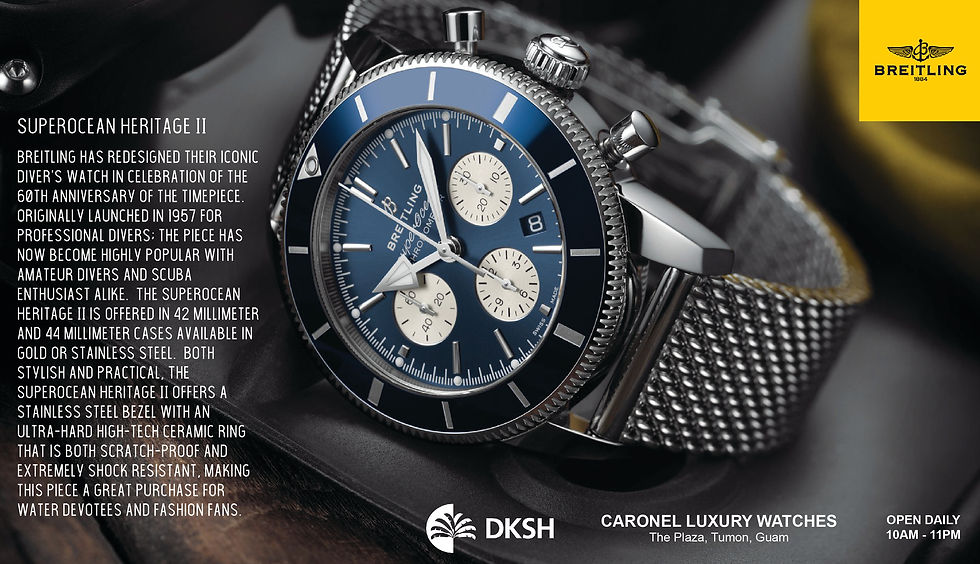
In March last year, local authorities seized 35 lbs of cocaine from the home of Robert Afaisen in Inarajan. The cocaine contained in a plastic barrel marooned into Afaisen’s beach property several weeks before the raid dubbed as “the biggest cocaine bust on Guam.” By then, the cocaine had been widely distributed, ensuing consecutive arrests of those found in possession of the white substance. The crackdown has resulted in multiple arrests and eventual convictions of drug dealers in local and federal courts.
It wasn’t an isolated incident. Prior to the Inarajan raid, the Drug Enforcement Administration reported two packages containing 4.4 lbs of cocaine washed ashore near Hawaiian Rock Products in Mangilao, and a month later, a similar package was found on Sirena Beach at Andersen Air Force Base.
_________
As early as 2003, the United Nations Office on Drugs and Crime identified the Blue Continent as “a strategic location” for global illicit drug trade. “It is a fact that the Pacific islands are extremely vulnerable to exploitation by drug traffickers,” the UN office declared it its 2003 report.
__________
Cocaine finds are not unique to Guam. The torrential flow of this white powder is in fact a billowing anomaly in the Pacific islands region, where fishermen now go out to sea not to catch fish but to hunt for any floating goodies.
Last year, hundreds of thousands of dollars’ worth of prepackaged drugs were cast ashore in these idyllic tropical islands week after week. Approximately 100 lbs of cocaine washed up on the shore in Marshall Islands. Around the same period, Papua New Guinean intercepted a boat full of cocaine in the Vitiaz Strait. Weeks later, Fiji authorities seized 20 bricks of cocaine that landed on the Fijian islands. In Federated States of Micronesia, unsuspecting residents stumbled upon 50 kilograms of cocaine floating in a lagoon, which they mistook for washing detergent.
Serious drug addictions lurk in these paradise islands, which have become a new highway for drug trafficking.
Jordan K. Andrews, deputy assistant Secretary for the Bureau of International Narcotics and Law Enforcement Affairs, for the Department of State, said “drugs are moving in all directions, everywhere” but authorities have yet to determine how exactly they end up in the Pacific islands region.
Since the flux of floating contraband is a more recent phenomenon, Andrews said, drug enforcement agencies do not have the cocaine traffic mapped. “So, the short answer is we don’t yet fully know,” Andrews said during a teleconference with Asia Pacific media on Aug. 2.
“When I was in the region last week and the week before, I had a chance to discuss the new trends with counterparts in the Philippines and elsewhere, and in terms of shipments of cocaine being found in the region, particularly washing up on beaches and floating in the ocean, there are some differing opinions,” he said.
ADVERTISEMENT

At this point, authorities grope for some plausible theories. “At least one expert maintains that if you look at the prevailing tides or the currents, that many of the Pacific islands are in the path of the prevailing east to west currents, so that drugs lost off the shore of South America could conceivably end up eventually in the waters and on the beaches of some of the Pacific islands,” Andrews said.
Others maintain that islands and other maritime countries in Southeast Asia are becoming transit points that drug traffickers are bringing shipments by boat across, Andrews said. Some of that product, he added, “end up in the sea either because they’re being detected or because that’s how they hand off to someone using a satellite transponder beacon or something.”
“But it would be surprising if those who produce and traffic cocaine were not looking to find new markets for their product, just as those who traffic heroin or fentanyl or meth are doing the same in all directions,” Andrews said.

Federal authorities attribute the surge of drug trafficking to the constantly growing globalization that facilitates easier and faster movement of cargo. The world, Andrews said, “continues to shrink with the availability of truly international logistics hubs and shipping services and things, we’re seeing a proliferation of the routes and the trafficking patterns and the directions in which drugs of all types are flowing.”
Consequently, the federal government is beset with the challenge of closing all the gaps and seams and catching the elusive traffickers who exploit all tools of a globalized world. “And it requires that we, the governments, coordinate and share information faster than ever so that we can stop this trafficking activity. But it’s a challenge because it’s proliferating, kind of, in all directions simultaneously,” Andrews said.
As early as 2003, the United Nations Office on Drugs and Crime identified the Blue Continent as “a strategic location” for global illicit drug trade. “It is a fact that the Pacific islands are extremely vulnerable to exploitation by drug traffickers,” the UN office declared it its 2003 report.
U.S. Coast Guard Commandant Admiral Karl L. Schultz said gaps in logistics and resources also add to the region’s general weakness. “Many Indo-Pacific nations lack the capacity and capability to fully police their sovereign waters, making them vulnerable to narcotics trafficking, human smuggling, illegal, unregulated, and unreported fishing, piracy, and terrorist activities,” Shultz said in a teleconference with reporters on July 23.
Cocaine is not new to Guam, according to Sgt. Paul Tapao, public affairs officer of the Guam Police Department. “It was big in the 80s and the 90s until it was overshadowed by crystal methampetamine as the drug of choice of users,” he said.
Like most other contraband, cocaine typically came to Guam through the ports of entry, via plane or ship, Tapao said. But authorities have been unable to identify the main source of drugs coming into Guam, he said.
Besides drug enforcement, Tapao said, authorities focus on education, prevention and treatment.


